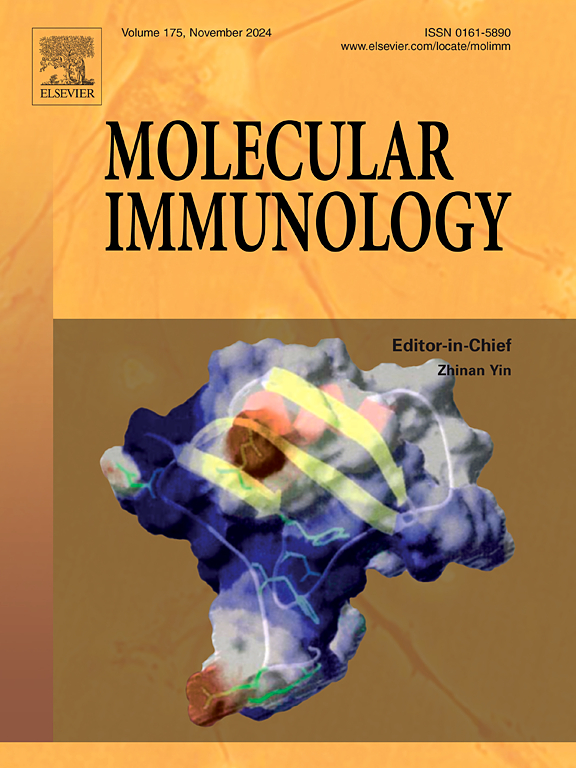Agmatine ameliorates sepsis-related intestinal injury via the AhR-STAT3-IL-10 pathway
IF 3
3区 医学
Q2 BIOCHEMISTRY & MOLECULAR BIOLOGY
引用次数: 0
Abstract
Background
Sepsis-related intestinal injury is essential in multi-organ dysfunction induced by the systemic inflammatory response. Agmatine (AGM) has anti-inflammatory, antioxidative, and immunomodulatory properties. However, no reports of AGM alleviating sepsis-related intestinal injury have been found. Therefore, this study intends to investigate the protective effects of AGM on sepsis-related intestinal injury and its potential mechanism.
Methods
We first established a sepsis model by lipopolysaccharide (LPS) or cecum ligation perforation (CLP), and then used H&E staining, transmission electron microscopy (TEM), and TUNEL to examine the pathological changes in rat intestines after AGM treatment. ELISA was used to detect expression levels of inflammatory factors in ileal tissues and biochemical indexes of infectionin in serum. TNF-α induced Caco-2 cell inflammation model was established in vitro, and cell activity and proliferative capacity were detected by CCK8 and EdU after AGM treatment. The Caco-2 cell inflammation model with high or low expression of Aryl hydrocarbon receptor (AhR) was established, and whether AGM exerts anti-inflammatory effects via AhR/STAT3/IL-10 pathway was investigated using molecular docking, Co-IP, and Western Blot.
Results
The histopathological staining demonstrated that AGM significantly reduced intestinal injury and the content of inflammatory factors IL-1β, IL-6, and TNF-α, improved systemic infection and the survival rate of septic mice, and restored intestinal barrier function in CLP rats. In vitro, AGM improved cell viability and proliferative capacity of the Caco-2 cell inflammation model. AGM inhibits inflammatory factor expression by activating AhR, decreasing HIF-1 protein expression, and activating the STAT3/IL-10 signaling pathway.
Discussion and conclusion
AGM has the potential to ameliorate sepsis-related intestinal injury via the AhR-STAT3-IL-10 pathway, thereby offering theoretical basis for clinical treatment of sepsis.
Agmatine通过AhR-STAT3-IL-10途径改善败血症相关肠道损伤
背景败血症相关的肠道损伤在全身炎症反应引起的多器官功能障碍中是必不可少的。Agmatine (AGM)具有抗炎、抗氧化和免疫调节特性。然而,没有发现AGM减轻败血症相关肠道损伤的报道。因此,本研究拟探讨AGM对脓毒症相关肠道损伤的保护作用及其可能机制。方法采用脂多糖(LPS)或盲肠结扎穿孔(CLP)建立脓毒症模型,采用H&;E染色、透射电镜(TEM)和TUNEL观察AGM处理后大鼠肠道的病理变化。ELISA法检测各组回肠组织炎症因子表达水平及血清感染素生化指标。体外建立TNF-α诱导Caco-2细胞炎症模型,用CCK8和EdU检测AGM处理后Caco-2细胞活性和增殖能力。建立高表达或低表达芳烃受体(Aryl hydrocarbon receptor, AhR)的Caco-2细胞炎症模型,采用分子对接、Co-IP、Western Blot等方法研究AGM是否通过AhR/STAT3/IL-10通路发挥抗炎作用。结果组织病理学染色结果显示,AGM可显著减轻CLP大鼠肠道损伤及炎症因子IL-1β、IL-6、TNF-α含量,改善脓毒症小鼠的全身感染和存活率,恢复肠道屏障功能。在体外,AGM可提高Caco-2细胞炎症模型的细胞活力和增殖能力。AGM通过激活AhR、降低HIF-1蛋白表达、激活STAT3/IL-10信号通路抑制炎症因子表达。讨论与结论agm具有通过AhR-STAT3-IL-10通路改善脓毒症相关肠道损伤的潜力,为脓毒症的临床治疗提供理论依据。
本文章由计算机程序翻译,如有差异,请以英文原文为准。
求助全文
约1分钟内获得全文
求助全文
来源期刊

Molecular immunology
医学-免疫学
CiteScore
6.90
自引率
2.80%
发文量
324
审稿时长
50 days
期刊介绍:
Molecular Immunology publishes original articles, reviews and commentaries on all areas of immunology, with a particular focus on description of cellular, biochemical or genetic mechanisms underlying immunological phenomena. Studies on all model organisms, from invertebrates to humans, are suitable. Examples include, but are not restricted to:
Infection, autoimmunity, transplantation, immunodeficiencies, inflammation and tumor immunology
Mechanisms of induction, regulation and termination of innate and adaptive immunity
Intercellular communication, cooperation and regulation
Intracellular mechanisms of immunity (endocytosis, protein trafficking, pathogen recognition, antigen presentation, etc)
Mechanisms of action of the cells and molecules of the immune system
Structural analysis
Development of the immune system
Comparative immunology and evolution of the immune system
"Omics" studies and bioinformatics
Vaccines, biotechnology and therapeutic manipulation of the immune system (therapeutic antibodies, cytokines, cellular therapies, etc)
Technical developments.
 求助内容:
求助内容: 应助结果提醒方式:
应助结果提醒方式:


